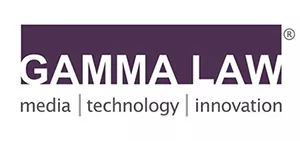- within Media, Telecoms, IT and Entertainment topic(s)
- in Australia
- with readers working within the Advertising & Public Relations and Banking & Credit industries
- within Corporate/Commercial Law, Privacy and Technology topic(s)
Artificial intelligence (AI) has the potential to revolutionize the way art is created, with some experts even predicting that AI-generated art will eventually become mainstream content. Wired's Kevin Kelly even wonders if the world's Magritte's will take a back seat to algorithms: "Who can compete with the speed, cheapness, scale, and, yes, wild creativity of these machines? Is art yet another human pursuit we must yield to robots?"
However, with this new technology comes a host of legal issues surrounding copyright, ownership, and fair use. In this article, we will explore these issues in the context of Web3 and non-fungible tokens (NFTs), which are unique digital assets that cannot be replicated.
Copyright and Creatorship in AI-generated Art
One of the most extensive legal issues surrounding AI-generated art is the question of copyright. In traditional art, the artists are the creators and therefore hold the copyright to their works. However, AI-generated art muddies the watercolors. Is the creator of AI-generated art the AI algorithm or the person who trained or programmed it?
This issue emerges because many AI algorithms orient on existing data. They incorporate perhaps millions of drawings, paintings, sculptures, photographs, and other images in their databases or search environment to gain "inspiration." It raises the question of whether an AI algorithm is simply repurposing existing content or if it is truly creating something new. Of course, as landscape artist Paul deMarrais observed, "...all art is derivative. There is no form of art that is totally original... By looking at and being familiar with all types of art, you are filling your brain with influences that may or may not show up in your painting."
So, when AI recalls and incorporates works that have preceded it, is it simply "filling its brain with influences"? A 2017 article published by the World Intellectual Property Organization (WIPO) noted that "the use of existing works as training data does not in itself constitute copyright infringement." However, the article also stated that if the AI algorithm repurposes existing content, it could be considered copyright infringement.
Ownership and NFTs in AI-Generated Art
The question of who owns AI-generated art is a complex issue further made more complicated by the application of Web3 technologies. Using blockchain, smart contracts, and decentralized networks can provide transparency, traceability, and automation, but it is essential for creators, buyers, and sellers to be aware of the legal complexities surrounding AI-generated art and Web3 and consult legal experts to ensure their rights are protected.
For example, blockchain-based platforms record the ownership of NFTs and other artwork on a public ledger, allowing for transparency and traceability. However, if an AI algorithm is the "artist," it needs to be clarified who should hold the ownership in the ledger and who should be able to sell or profit from it.
Smart contracts can automate the transfer of ownership, but the question of who should be considered the artwork's owner remains open. A smart contract can transfer ownership to the person who trained the algorithm, the one who created the dataset, or the individual who bought the NFT. However, it is not always clear who this should be and ownership often depends on the specific terms and conditions drafted into the smart contract by the creator or the platform.
Decentralized networks enable peer-to-peer transactions and eliminate intermediaries, but they also introduce complexity to the ownership question. In a decentralized network, the right of artwork control can be recorded on multiple nodes, making it easy to accurately trace an artwork's provenance and chain of ownership.
Fair Use and Training Data in AI-generated Art
Fair use is a legal doctrine that allows third parties to use copyrighted material for specific purposes, such as criticism, commentary, news reporting, teaching, scholarship, or research, without obtaining the creator's permission. The applicability of fair use in the case of AI-generated art depends upon whether the existing data and visuals are used merely to train the algorithm.
In recent years, several high-profile examples of AI-generated art have brought to light the legal issues surrounding this new medium:
- In 2020, a digital portrait, "Edmond de Belamy, from La Famille de Belamy," created by an AI algorithm sold for $432,500 at Christie's auction house, setting a new record for AI-generated art. This sale raised questions about whether the algorithm's creator, the program's coder, or the collective that modified the code, should be allowed to profit from its sale.
- In 2021, a group of artists and researchers trained an AI algorithm on a dataset of over 80,000 images of 20th-century art and used it to generate new ideas. The project, called "The Next Rembrandt," was intended to explore the creative potential of AI. However, it also raised questions about using existing artworks as training data and whether the practice constitutes fair use or copyright infringement.
- In 2021, Obvious, the collective behind the de Belamy
portrait, created an AI algorithm that was trained on a dataset of
15,000 portraits and used to generate new images. The company then
sold these images as prints, again bringing the question of
rightful ownership into the spotlight.
- In 2023, a computer scientist filed suit to overturn the decision to deny copyright registration for artwork created by an AI engine he built. The copyright office rejected the application, stating that the work "lacked the required human authorship necessary to support a copyright claim." This case may stimulate the discussion about AI and copyright.
The Need for Clarity in the Emerging World of AI Art.
AI-generated art raises several legal issues surrounding
copyright, ownership, and fair use. These issues occur more with
the emergence of Web3 and NFTs, unique digital assets that cannot
be replicated by others. As the use of AI in the art world
continues to grow, legal experts need to work on clarifying these
issues and establishing guidelines for how AI-generated art should
be treated under copyright law.
View video digest version of this article:
The content of this article is intended to provide a general guide to the subject matter. Specialist advice should be sought about your specific circumstances.


